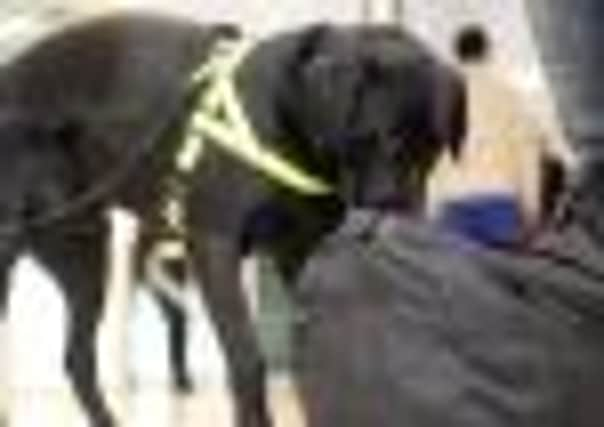Drug sniffing dogs target Hull school buses


Millie, a six-year-old springer spaniel, and Alfie, a Labrador aged three, boarded school buses arriving at Sydney Smith secondary school in Anlaby, near Hull, yesterday morning, and were also on hand to meet pupils leaving Wolfreton Upper School in Kirk Ella.
No illegal substances were found and police said they were not aware of particular drug problems at either school, but hoped the exercise would act as a deterrent and show young people who well the dogs can sniff out illegal drugs or paraphernalia.
Advertisement
Hide AdAdvertisement
Hide AdHumberside Police said: “The purpose of the operation is to proactively show people the police in the East Riding take a zero tolerance stance against drugs and especially running up to the Christmas period when more people are out socialising.
“Following Millie or Alfie potentially identifying people in possession of a controlled drug, such as cannabis, M-Cat or cocaine, the person will be dealt with accordingly, which could be by means of a caution, or being arrested.
“The Haltemprice area does not have a particular issue with illegal substances, but due to the very motivated officers working in the area, the operation has been arranged to deter and educate people before, rather than later.”
The dogs, accompanied by two from Humberside Police, were also taken to areas where police have received complaints from residents about anti-social behaviour and alleged drug use.
Advertisement
Hide AdAdvertisement
Hide AdSites visited by the dogs included local pubs and Haltemprice Leisure Centre, one of the busiest in the country.
PC Andy White, of Kirk Ella neighbourhood policing team, who organised the searches, said: “I intend to visit as many pubs as I can to get the best use out of the dogs’ time.
“If you are tempted to take drugs in pubs or you are smoking illegal substances, don’t do it.”
Last month, police in Hull launched a campaign to raise awareness of the dangers of mephedrone amid concerns it is becoming the “drug of choice” for young people.
Advertisement
Hide AdAdvertisement
Hide AdOfficers said they were receiving increased reports about a surge in the use of the drug – more commonly known by its street name M-Cat – and also wanted to make parents aware of how to spot signs that someone is using it.
“M-Cat appears to be the drug of choice at the moment,” Chief Insp Dave Houchin said. “We have noted that M-Cat is an aggravating factor in offences such as public order and violent crime, in that people who have taken it and similar substances are sometimes in a heightened and more aggressive state.”
Earlier this month the Yorkshire Post revealed that escalating use of party drugs by youngsters in the region is leaving scores with severe health problems usually suffered by the elderly.
Police said use of the drugs has tripled in the county in the past few years amid growing fears about a surge in the recently banned high mephedrone, also known as “meow meow”, which a report revealed was linked with more than 40 deaths in 2010 – eight times as many as the previous year.
Advertisement
Hide AdAdvertisement
Hide AdThe National Programme on Substance Abuse Deaths report revealed the biggest increase in drug deaths related to mephedrone, with cases rising from five deaths in 2009, to 43 the following year.
The report warned the drug had now “tightened its grip on the recreational drug scene in Western Europe, but in particular in Britain.
“The rapidity with which these new substances have emerged appears to be at an increasing rate,” it added.
Health workers in Leeds said they are also witnessing rocketing cases caused by the now banned drug ketamine which leaves users with diseased bladders, forcing them to go to the toilet many times a day. In some cases, the organ has been removed altogether.
Advertisement
Hide AdAdvertisement
Hide AdHundreds of strains of so-called legal highs are now on the streets and children as young as 14 have been hospitalised for taking them.
Since mephedrone was made a banned Class B drug in 2010, the number of arrests for possession have nearly doubled in two years.